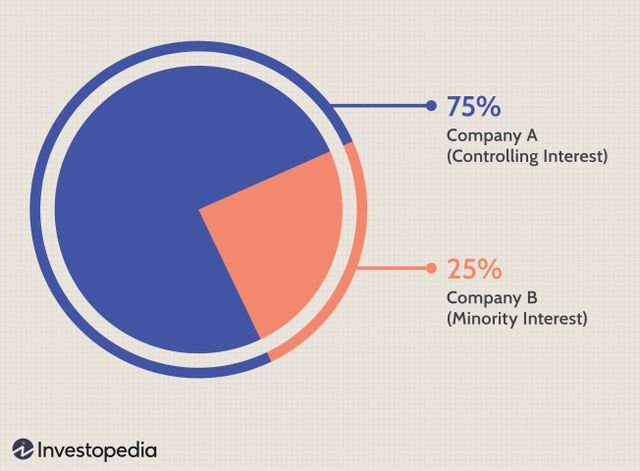How To Avoid Emotional Investing
Fact checked by Suzanne Kvilhaug
It’s essential for investors to manage the behavioral impulses that can come from following the market’s ups and downs. Nevertheless, investors seem to have a knack for piling into investments at market tops and selling at the bottoms, whether due to fear of missing out (FOMO) or fear generally. Behavioral finance experts also point to a range of irrational patterns that traders can fall into.
Below, we’ll describe the different kinds of investors you might be and then show you how to combat the patterns that lead to emotional investing.
Key Takeaways
- Investing based on emotion (greed or fear) is the main reason so many people buy at market tops and sell at bottoms.
- Underestimating the risk associated with investing is one reason investors sometimes make bad decisions based on emotion.
- During periods of market volatility and rising interest rates, investors often move funds from riskier stocks to lower-risk, fixed-rate securities.
- Dollar-cost averaging and diversification are two approaches that investors can implement to make consistent decisions not driven by emotion.
- Staying the course through short-term volatility is often the key to longer-term success as an investor.
Which Kind of Investor Are You?
We’re all far more complicated than any personality test will reveal. Still, it’s helpful to begin by asking what kind of investor we might be, since that will help us understand our emotional vulnerabilities when investing. Most investors exhibit traits from multiple categories, and your investing personality may evolve. But an honest self-assessment is a good place to begin:
1. The Anxious Conservative
This investor prioritizes safety above all else. While prudence is valuable, too much fear can lead to missed opportunities and portfolios with returns that don’t keep pace with inflation.
Conservative investors often sell at market bottoms out of panic and may wait too long to re-enter the market, missing the recovery phase where significant gains typically occur.
Self-sabotage correctives: Using automated investment plans that prevent you from attempting to time the market. Consider setting a rule to never sell more than a preset percentage of your portfolio during market downturns.
2. The Overconfident Risk-Taker
These investors believe they can time the market or pick winning stocks consistently (few do). Overconfidence often leads to excessive trading, too much invested in high-risk assets, and avoiding any acknowledgment of past mistakes by concentrating only on “wins.” During bull markets, these investors might double down on risky positions, only to face devastating losses when markets correct.
Self-sabotage correctives: Put strict position-size rules in place—e.g., no single position worth more than 5% of your portfolio—and keep a detailed investment journal documenting your rationale for each decision. You should review this journal quarterly to assess your actual success rate.
3. The Pack Follower
Easily influenced by media hype and water cooler conversations, the pack followers chase whatever is the hot thing on Reddit right now—cryptocurrency one year, tech stocks the next. This reactionary approach typically results in buying high and selling low, as these investors arrive late to trends and exit after significant corrections have already occurred.
Self-sabotage correctives: You might put in place a “waiting period” (e.g., 30 days) before allowing yourself to act on a new investment idea so your initial excitement about it has time to fade. You can also limit yourself to a fixed monthly investment no matter the market conditions—which is called dollar-cost averaging (anyone putting a set amount of each paycheck into a retirement account is doing this). Below we compare this strategy to trying to time the market:
4. The Perfectionist
These investors are paralyzed by the quest for the “perfect” investment or entry point, making the perfect the enemy of the good. They may keep too much cash on the sidelines waiting for an ideal moment that never comes, or sell winning positions too early for fear of giving back gains.
The perfectionist’s emotional challenge is accepting that successful investing doesn’t require perfection, just consistency.
Self-sabotage defense: Set clear trigger points for action (e.g., “I will invest 20% of my available cash when the market drops 5%”) and use trailing stop-losses instead of trying to manually time exits. Being mostly right over time is still far better than being paralyzed by indecision. Below is a diagram for a trailing stop-loss, along with tabs for other kinds of orders that can help offset some of the hasty decisions that can lead to emotional investing.
5. The Distracted Delegator
This investor knows they should pay attention to their portfolio, but finds financial matters either intimidating or boring. They might reactively follow recommendations without understanding them or leave accounts unmonitored for years. When market volatility eventually catches their attention, they’re prone to making dramatic, emotionally-driven changes rather than thoughtful adjustments.
Self-sabotage defense: Consider working with a financial advisor or using a robo-advisor that provides guardrails to prevent letting your portfolio languish for too long. Schedule semiannual calendar reminders for portfolio reviews that include specific questions to answer, rather than just checking account balances.
A good advisor (robotic or human) will help you do the work of rebalancing your portfolio, which the distracted delegator hasn’t likely done in years:
The Psychology Behind Our Investment Decisions
Behavioral finance, the study of psychological influences on investors and markets, provides some answers as to why many smart investors make calamitous decisions with their portfolios. Some key cognitive biases affecting our decision-making include the following:
How Your Personality Reacts to Market Cycles
Your investor personality doesn’t exist in a vacuum—it interacts with market conditions to create predictable patterns of behavior. Here are some examples:
Bull Markets:
- The over-confident risk taker becomes increasingly reckless, taking on excessive risk.
- The pack follower frantically jumps between hot sectors, always arriving late as institutional investors and the “smart money” are taking their gains.
- The perfectionist stands by, frustrated, watching others profit while awaiting the “perfect” entry.
Bear Markets:
- The anxious conservative feels validated and may cash out completely, selling a discount and missing out on gains once the market goes back up.
- The distracted delegator finally pays attention, often making panic-driven decisions.
One reason many investors fall into emotional investing is because they’ve lost sight of what their portfolio is ultimately for. “I think a lot of people tend to equate their self worth with their income, or because of social media, which can pressure people to make it look like they’re doing better than they are. And because of that, people feel bad,” said Amy Morin, Verywell Mind’s editor-in-chief.
Your Personal Action Plan
Once you’re aware of your tendencies, you’ll want to work on a concrete plan. Here are some steps you might take to harness your investor personality rather than being controlled by it:
- Identify your dominant investor type(s) from the personalities described earlier.
- Implement counterbalancing strategies for your specific types. These targeted approaches will help neutralize your particular emotional vulnerabilities.
- Create a written investment policy statement outlining your financial goals, time horizon, risk tolerance, and the conditions under which you’ll buy or sell investments.
- Make yourself accountable by sharing your investment plan with a trusted friend, family member, or financial advisor who can help keep you on track during emotional market periods.
- Schedule quarterly reviews focused on whether you’re adhering to your plan, not on market performance.
Long-Term Strategies for Outlasting Your Emotions
While market emotions can feel overwhelming in the moment, the antidote is surprisingly straightforward: adopting a long-term investment approach. There’s a salutary benefit: for many investors, this means gaining more by doing less.
Research consistently shows that investors who trade frequently underperform those who maintain a patient, methodical approach. Research in the Journal of Financial Issues, which analyzed 30 years of S&P 500 data, compared dollar-cost averaging against three different strategies for timing the market. The researchers found that dollar-cost averaging beat out these strategies—and was outperformed only by a trading strategy meant to mimic having perfect foresight of market moves.
Dalbar’s annual Quantitative Analysis of Investor Behavior report is well known for continually testing the average equity investor’s returns versus the S&P 500 Index over the previous 20 years. In many years, the gap has been higher than 3%. In its 2025 report, Dalbar found the differences below, which would amount to about $130K less in your portfolio from emotional investing if you began the period with $100K.
Three time-tested strategies help investors maintain a long-term perspective regardless of their personality type:
Dollar-Cost Averaging: Consistency Over Timing
Experts say the key to successful dollar-cost averaging is unwavering consistency. Set the strategy and commit to it regardless of market headlines or short-term performance.
This approach works particularly well in 401(k) plans with employer matching, where fixed contributions from each paycheck create a disciplined investment pattern reinforced by employer contributions.
The most effective long-term strategies remove the need for frequent decisions. Automation—whether through scheduled investments, target-date funds, or professionally managed accounts—helps create a barrier between your emotions and your investment decisions.
Diversification: Protection Through Variety
Diversification—spreading investments across different types of assets—provides a time-honored defense against emotion-driven decisions. When your portfolio includes a variety of investments that don’t all move in the same direction simultaneously, the emotional impact of any single market movement is reduced.
True diversification extends beyond just holding different stocks. It means diversifying across these allocation types:
- Different asset classes (stocks, bonds, real estate, cash)
- Various market sectors (technology, healthcare, consumer goods)
- Geographic diversity (domestic and international markets)
- Investment styles (growth, value, income)
- A modest allocation to alternative investments (real estate, commodities)
How Do I Identify My Investor Personality Type?
Pay attention to your emotional reactions during significant market moves. Your thought patterns during both gains and losses reveal your type. Examining your past investment decisions is also telling—look for recurring mistakes or emotional triggers.
How Can One Measure the Level of Fear or Greed in the Stock Market?
There are several market sentiment indicators one can look at, but the Cboe’s VIX index specifically measures the implicit level of fear or greed in the market by looking at changes in the expectation of volatility of the S&P 500.
How Can I Make It Easier Not To Panic During Extreme Volatility?
Create a market volatility response plan before you need it. Write down specific actions you’ll take at different market thresholds (e.g., “If the market drops 10%, I’ll rebalance but not sell”). During periods of volatility, you might even limit how much you watch or read in the financial media to avoid panic-inducing headlines.
The Bottom Line
The most successful investors aren’t necessarily the most knowledgeable—they’re often the most disciplined. By identifying your investor personality type and understanding how psychological biases affect your decisions, you can then use strategies that protect your portfolio from your emotions. Dollar-cost averaging, diversification, and automated investment plans can act as guardrails against the emotional reactions that lead most investors to buy high and sell low.





